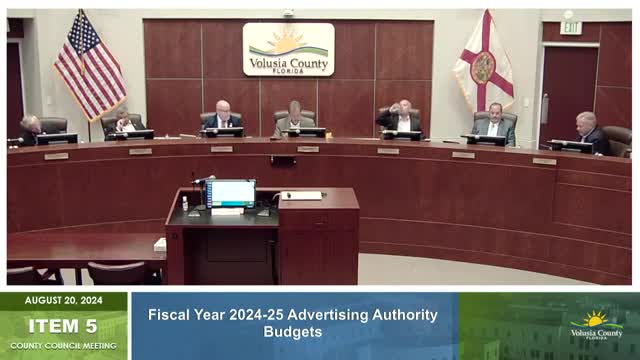Deland Council Approves Controversial Townhouse Development Plan
August 20, 2024 | Volusia County, Florida

This article was created by AI summarizing key points discussed. AI makes mistakes, so for full details and context, please refer to the video of the full meeting. Please report any errors so we can fix them. Report an error »

In a recent government meeting, the Deland City Council discussed a proposed rezoning resolution for an eight-acre parcel located at Garfield and Kentucky Avenue. The proposal seeks to change the zoning classification from R-4 to Planned Unit Development (PUD) to allow for the construction of 50 townhouses. The development is designed to be owner-occupied and will not be targeted for student housing, addressing concerns raised during earlier planning discussions.
Clay Irvin, the Director of Growth and Resource Management, presented the details of the project, emphasizing that the site is within the city’s utility service area and aligns with the Deland 2050 plan, which encourages higher density developments in the area. The proposed development would feature individual townhome units across eight buildings, with a total of 50 units planned, which is below the maximum density allowed for the site.
Concerns from local residents included the preservation of existing vegetation, potential traffic increases, and the overall size of the units. The Planning and Land Development Regulation Commission (PLDRC) had previously reviewed the proposal and unanimously recommended its approval, despite receiving two letters of objection and hearing from two residents against the project.
The council also addressed potential flooding issues, particularly in relation to neighboring properties. Irvin assured that the development would adhere to strict stormwater management regulations, including maintaining a finished floor elevation six inches above the centerline of adjacent roads. The project is designed to capture and retain stormwater on-site, preventing any discharge into surrounding neighborhoods.
Michael Woods, representing the applicant, highlighted the project's compatibility with the surrounding area, noting its proximity to existing commercial developments and the planned multimodal trail system. He emphasized that the project aims to enhance connectivity and accessibility for residents.
The council's discussion also touched on the implications of the gated community design, which would require the developer to maintain internal roadways, alleviating future maintenance costs for taxpayers. The meeting concluded with a commitment to further evaluate the project’s impact on the community, ensuring that it meets both regulatory standards and local needs.
As the council moves forward with the proposal, the focus remains on balancing development with community concerns, particularly regarding environmental impacts and infrastructure.
Clay Irvin, the Director of Growth and Resource Management, presented the details of the project, emphasizing that the site is within the city’s utility service area and aligns with the Deland 2050 plan, which encourages higher density developments in the area. The proposed development would feature individual townhome units across eight buildings, with a total of 50 units planned, which is below the maximum density allowed for the site.
Concerns from local residents included the preservation of existing vegetation, potential traffic increases, and the overall size of the units. The Planning and Land Development Regulation Commission (PLDRC) had previously reviewed the proposal and unanimously recommended its approval, despite receiving two letters of objection and hearing from two residents against the project.
The council also addressed potential flooding issues, particularly in relation to neighboring properties. Irvin assured that the development would adhere to strict stormwater management regulations, including maintaining a finished floor elevation six inches above the centerline of adjacent roads. The project is designed to capture and retain stormwater on-site, preventing any discharge into surrounding neighborhoods.
Michael Woods, representing the applicant, highlighted the project's compatibility with the surrounding area, noting its proximity to existing commercial developments and the planned multimodal trail system. He emphasized that the project aims to enhance connectivity and accessibility for residents.
The council's discussion also touched on the implications of the gated community design, which would require the developer to maintain internal roadways, alleviating future maintenance costs for taxpayers. The meeting concluded with a commitment to further evaluate the project’s impact on the community, ensuring that it meets both regulatory standards and local needs.
As the council moves forward with the proposal, the focus remains on balancing development with community concerns, particularly regarding environmental impacts and infrastructure.
View full meeting
This article is based on a recent meeting—watch the full video and explore the complete transcript for deeper insights into the discussion.
View full meeting